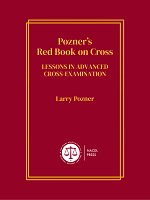- Michigan has abolished the death penalty. It also allows for parole, even for certain drug offenders sentenced to life.
- Michigan allows for mandatory LWOP and JLWOP. See MCLS § 791.234 (2012).
- Juveniles may be transferred to adult court at age 14. See MCLS § 712A.4 (2012).
State Constitution
MCLS Const. Art. I, § 16 (2012) Bail; fines; punishments; detention of witnesses.
Excessive bail shall not be required; excessive fines shall not be imposed; cruel or unusual punishment shall not be inflicted; nor shall witnesses be unreasonably detained.
NOTE: Article I, Section 16 of the Michigan Constitution may be broader than the Eighth Amendment. Under Michigan’s proportionality analysis, courts look to the penological purpose of the punishment in addition to the other three Solem-like factors.
Sentencing Statutes
- Sentencing Guidelines System – MCLS § 769.34 (2012) -- Michigan Sentencing Guidelines: Worksheet completion is mandatory, and sentences should fall within the provided guideline range. Judges may depart from the guidelines for compelling reasons, but must note the reason for departure on the record. Defendants may not appeal departures. Michigan’s sentencing manual is found here: https://mjieducation.mi.gov/documents/felony-sentencing-resources/74-2012-sgm
- Habitual Offender Statute – MCLS § 769.11 (2012) -- § 769.11. Punishment for subsequent felony following conviction of 2 or more felonies; sentence for term of years considered indeterminate sentence; use of conviction to enhance sentence prohibited.
The Legislature requires a sentence to be proportional to “the seriousness of the circumstances surrounding the offense and the offender.” People v. McElrath, 2010 Mich. App. LEXIS 2284, 15-16 (Mich. Ct. App. Nov. 30, 2010) (citing People v. Babcock, 469 Mich. 247, 262 (Mich. 2003)). The Michigan sentencing guidelines recommend a sentencing range which takes into account the seriousness of the offense and the circumstances surrounding the offender. Id.
A sentence which falls within the sentencing guidelines range is presumed proportionate. People v. Wash., 2011 Mich. App. LEXIS 1972, 10-11 (Mich. Ct. App. Nov. 8, 2011); People v. McElrath, 2010 Mich. App. LEXIS 2284, 15-16 (Mich. Ct. App. Nov. 30, 2010); People v. Sanchez, 2009 Mich. App. LEXIS 2047, 12-13 (Mich. Ct. App. Sept. 29, 2009); People v Powell, 278 Mich App 318, 323 (Mich. Ct. App. 2008); People v Broden, 428 Mich 343, 354-355 (Mich. 1987).
Case Law
General
United States Supreme Court cases provide only persuasive authority for purposes of interpreting Michigan’s Constitution. Therefore, the Michigan Supreme Court may choose to rely upon the reasoning of dissenting justices of the United States Supreme Court when interpreting the Michigan Constitution. People v. Bullock, 440 Mich. 15, 27-29 (Mich. 1992).
Simply because the Michigan Supreme Court has the authority to interpret the Michigan Constitution more expansively than the US Constitution does not meant that the Michigan Supreme Court will choose to exercise that authority. People v. Bullock, 440 Mich. 15, 27-29 (Mich. 1992).
State Constitution & Proportionality
The prohibition of punishment that is unusual but not necessarily cruel carries an implication that unusually excessive imprisonment is included in that prohibition. People v. Lorentzen, 387 Mich. 167, 172 (Mich. 1972); People v. Bullock, 440 Mich. 15, 31 (Mich. 1992).
If a punishment "passes muster under the state constitution, then it necessarily passes muster under the federal constitution." People v. Benton, 294 Mich. App. 191, 204 (Mich. Ct. App. 2011) (quoting People v. Nunez, 242 Mich App 610, 618-619 n 2 (Mich. Ct. App. 2000)).
“The dominant test of cruel and unusual punishment is that the punishment is in excess of any that would be suitable to fit the crime.” People v. Lorentzen, 387 Mich. 167, 176 (Mich. 1972); People v. Coles, 417 Mich. 523, 530-533 (Mich. 1983).
A proportionate sentence is neither cruel nor unusual. People v. Jipping, 1996 Mich. App. LEXIS 1692 (Mich. Ct. App. Dec. 20, 1996).
To determine whether a sentence is excessive under Article 16 of the Michigan Constitution, the Michigan Supreme Court follows the three-part Lorentzen test. In this test the court considers the following: (1) the gravity of the offense and the harshness of the penalty; (2) the sentences imposed for other offenses within Michigan and the sentences imposed by other states for the same offense; and (3) the penological purpose in establishing the punishment. People v. Ball, 2011 Mich. App. LEXIS 582 (Mich. Ct. App. Mar. 24, 2011); People v. Bullock, 440 Mich. 15, 33-35 (Mich. 1992);SeePeople v. Fernandez, 427 Mich. 321, 335 (Mich. 1986); People v. Lorentzen, 387 Mich. 167, 176 (Mich. 1972); People v. Benton, 294 Mich. App. 191, 204 (Mich. Ct. App. 2011); People v. Walker, 146 Mich. App. 371, 374-376 (Mich. Ct. App. 1985).
Under the second prong, “the definition of cruel or unusual punishment becomes a flexible one, changing with the evolving standards of decency as expressed by similar penal statutes.” People v. Coles, 417 Mich. 523, 530-533 (Mich. 1983).
The penological goal of rehabilitation cannot be met by a sentence of life imprisonment without parole. However, this does not render the sentence cruel or unusual; life imprisonment without parole meets other important goals of punishment, such as deterrence of others, deterrence of the offender, and punishment of the offender. People v. Fernandez, 427 Mich. 321, 338-339 (Mich. 1986).
A mandatory life sentence without parole is not per se unconstitutional. See People v. Fernandez, 427 Mich. 321, 335 (Mich. 1986).
A minimum sentence violates the prohibition against cruel and unusual punishment when it is “demonstrably and grossly excessive, in the light of the depravity of the criminal as shown in the commission of the act and in light of the usual and customary disposition of those convicted of like conduct.” People v. Sinclair, 387 Mich. 91, 153 (Mich. 1972).
At sentencing, a trial court must articulate its reasons for imposing a particular sentence. While not an exhaustive list, “the proper criteria for determining an appropriate sentence include: (1) the disciplining of the wrongdoer, (2) the protection of society, (3) the potential for reformation of the offender, and (4) the deterring of others from committing like offenses.” People v. Coles, 417 Mich. 523, 530-533 (Mich. 1983) (citing People v Snow, 386 Mich 586, 592 (Mich. 1972)). The sentencing court must identify which criteria were considered and which criteria supported its sentencing decision. Furthermore, upon defendant’s appeal, an appellate court will review the sentencing court’s exercise of discretion, and may afford relief to the defendant if the appellate court finds that the sentencing court abused its discretion in a manner that “shocks the conscience” of the appellate court. People v. Coles, 417 Mich. 523, 530-533 (Mich. 1983).
When a sentence falls within the sentencing guidelines, consecutive sentencing does not overcome a strong presumption of proportionality. The sentencing court “is not required to consider the cumulative length of consecutive sentences” when performing proportionality reviews. People v. Wash., 2011 Mich. App. LEXIS 1972, 10-11 (Mich. Ct. App. Nov. 8, 2011) (quoting People v. St. John, 230 Mich. App. 644, 649 (Mich. Ct. App. 1998)).
The following cases mention both Article 16 of the Michigan Constitution and the Eighth Amendment, but do not provide any significant, separate analysis of Article 16:
- People v. Ellis, 2008 Mich. App. LEXIS 923 (Mich. Ct. App. May 8, 2008) –
- People v. Johnson, 1997 Mich. App. LEXIS 3091 (Mich. Ct. App. Aug. 1, 1997) –
Leading Court Discussions of Graham and Miller
People v. Carp, 2014 WL 3174626 (July 8, 2014) (Miller does not apply retroactively; Neither Eighth Amendment or Michigan Constitution categorically bar imposition of LWOP on juveniles)













